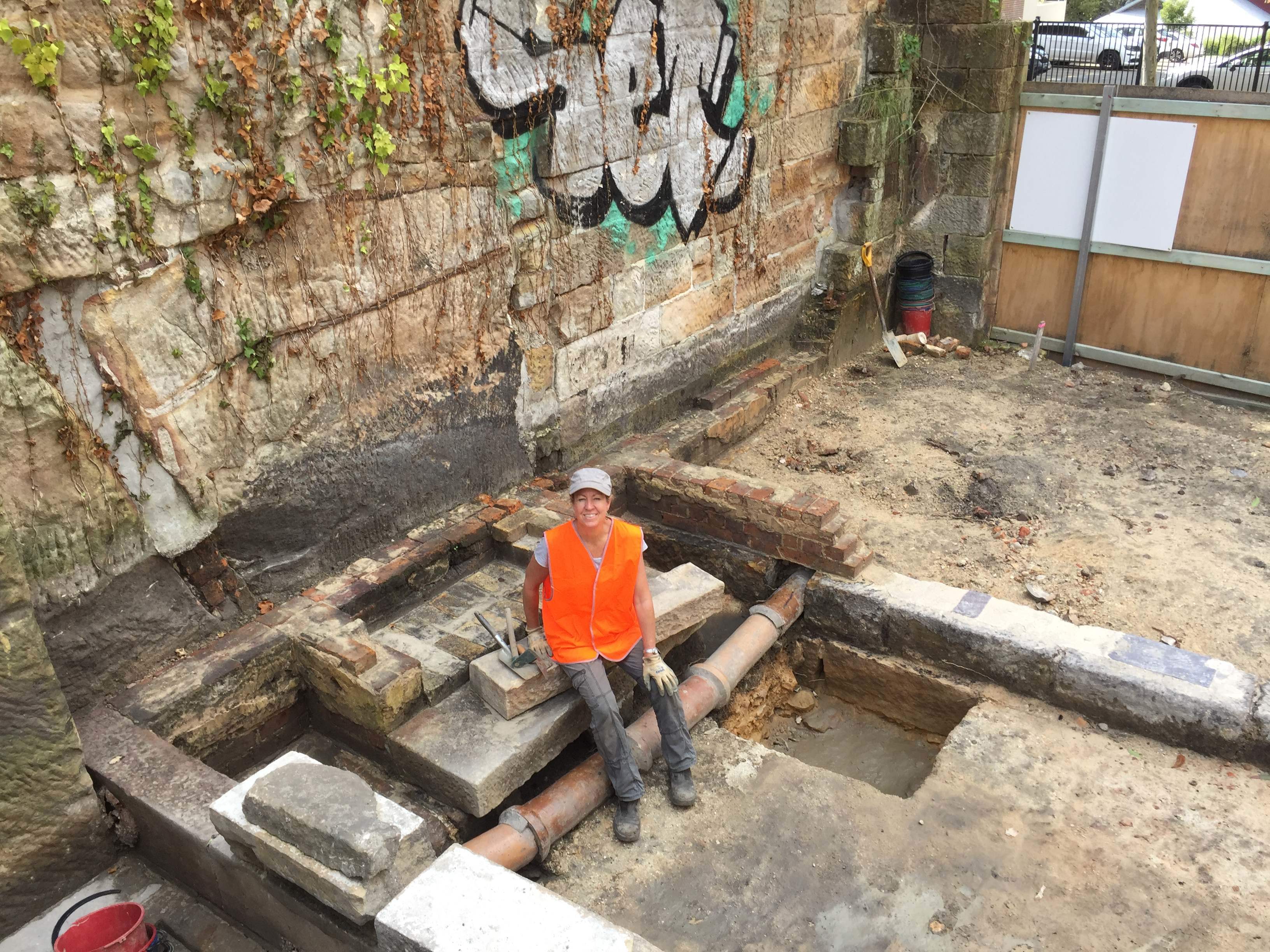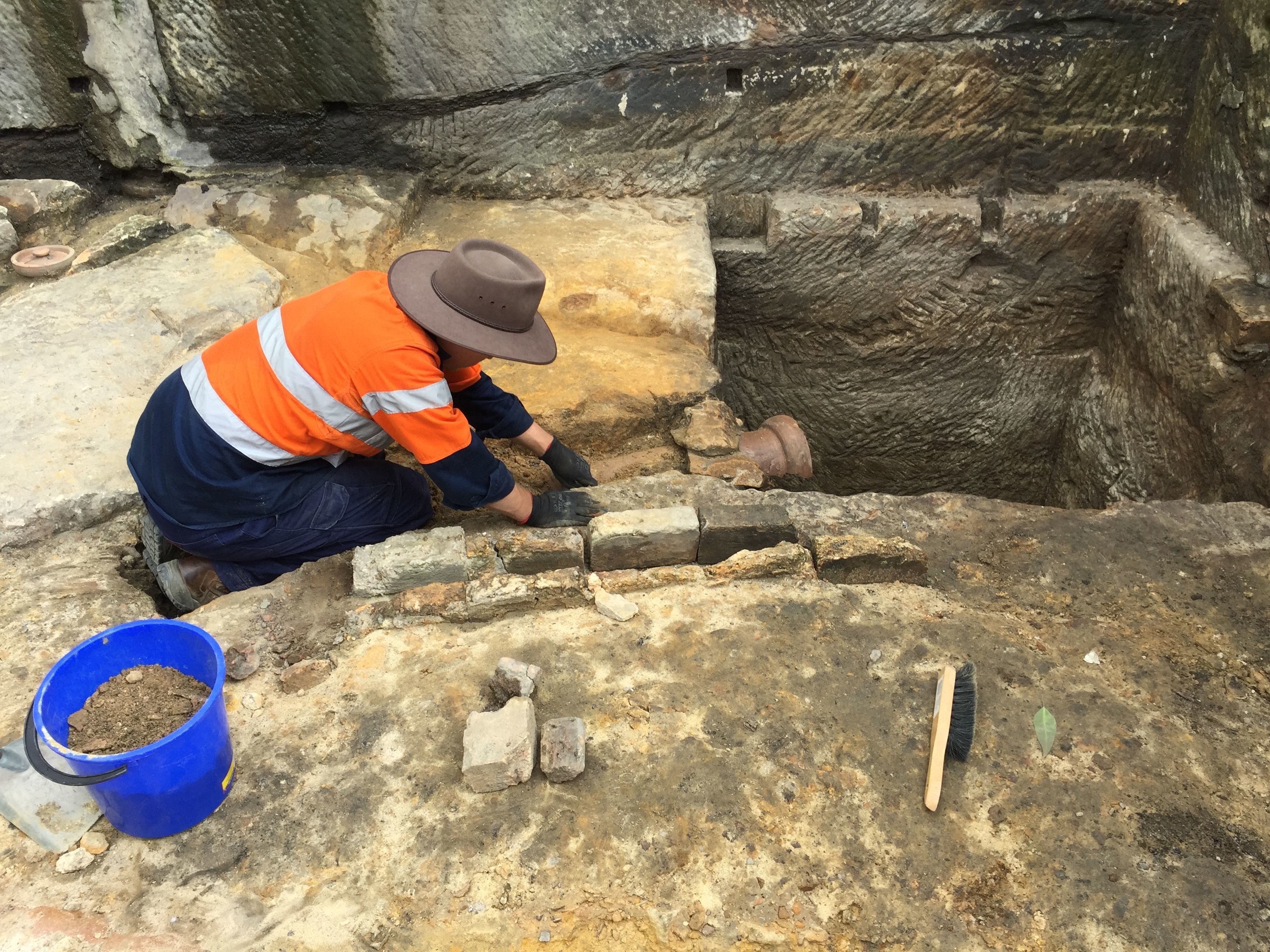A Day in the Life of an Archaeologist
Thursday, 27 April, 2017

In this latest installment, we shed light on the fascinating profession of archaeology by chatting to Karyn McLeod, Senior Historical Archaeologist and Heritage Specialist at Eco Logical Australia to see what her typical day looks like and suss out why digging in the dirt can be so much fun.
6:30am – start the day by checking the weather forecasts. You can’t dig in the rain. We’re digging into foundations below ground level so if it rains our holes fill up with water.
7.30am – site discussion with crew. There are eight qualified archaeologists on this dig. We do a briefing, discuss what we found yesterday, identify hazards and make sure we are wearing the right safety gear and have the necessary equipment.
I’m currently directing the excavation of a site in Pyrmont, near the Sydney CBD for EMM, a planning and environment consultancy. The site contained an early quarry and some old worker’s cottages dating between 1840’s -1880’s. It is a reasonably rare site as it’s quite large and not much archaeology has been done in the Pyrmont area before.
Most people have the wrong idea about archaeology – it’s not about finding treasure. Prior to excavation of the site the archaeologist has undertaken extensive background research and prepared an archaeological assessment. We usually have a pretty good idea of what we are going to find and where.
10:00am – supervise removal of fill. A mechanical excavator is used clear the foundations of demolition rubble. We do as much as we can with the excavator and then do the fine work by hand. We use picks, shovels, buckets, trowels and wheelbarrows. We are often on our hands and knees. Very glamorous! You can’t be too precious on site, you’re in there getting dirty and muddy. That’s half the fun of it, the best artefacts are generally in the sludge!
11:00am – extract significant items. Archaeology is about recovering what people in the past left behind. We look for things like underfloor deposits, which are items that fall between floorboards such as broken glass and crockery, needles, toys, dinner bones and other little bits and pieces. These deposits tell us a lot about the quality of people lives - what items were available to purchase, whether they had money to buy luxury goods, what sort of food they were eating.
1:00pm – lunch. On this site there is a vacant house with a toilet, fridge and microwave, and somewhere to store our tools, which is a luxury for us. Sometimes we’re just get a portaloo and an empty shipping container. Being in Pyrmont there is also a nice coffee shop across the road and a pub on the corner. Lucky!
2:00pm - excavate significant deposits. The Harris Street Site has several cesspits, (toilet) and a well which is pretty exciting as large holes in the ground are where people threw their rubbish in the past. In addition to bottles and broken plates we find charcoal, animal bones, beads, buttons, needles, marbles and many other items. Our artefact specialist and student volunteers then wash, clean, bag and catalogue the artifacts. Artifacts can be identified by checking library catalogues, books and other sources such as previous excavation reports.

History is generally written by men and therefore the women and children of the past don’t exist in the historical record. We particularly like being able to discover how women and children lived by studying the toys, jewelry, shoes and other personal items they left behind. Our aim is to add new information to the historical record.
3:00pm – documentation. As we find features and deposits we describe them, draw and photograph them for future reporting. I will handover my field observation notebook to EMM at the end of the dig and they will use my notes to supplement their report.
4:00pm – finish. Nothing makes you fit like shoveling and carrying buckets all day. At the end of the day you’re absolutely buggered. But I’ve been doing this for 20+ years and I still absolutely love it.
